Types of spider plants – 8 varieties of this low maintenance favorite to grow at home
Whether you're a seasoned spider plant pro or a beginner, this guide will help you select the perfect variety for your home
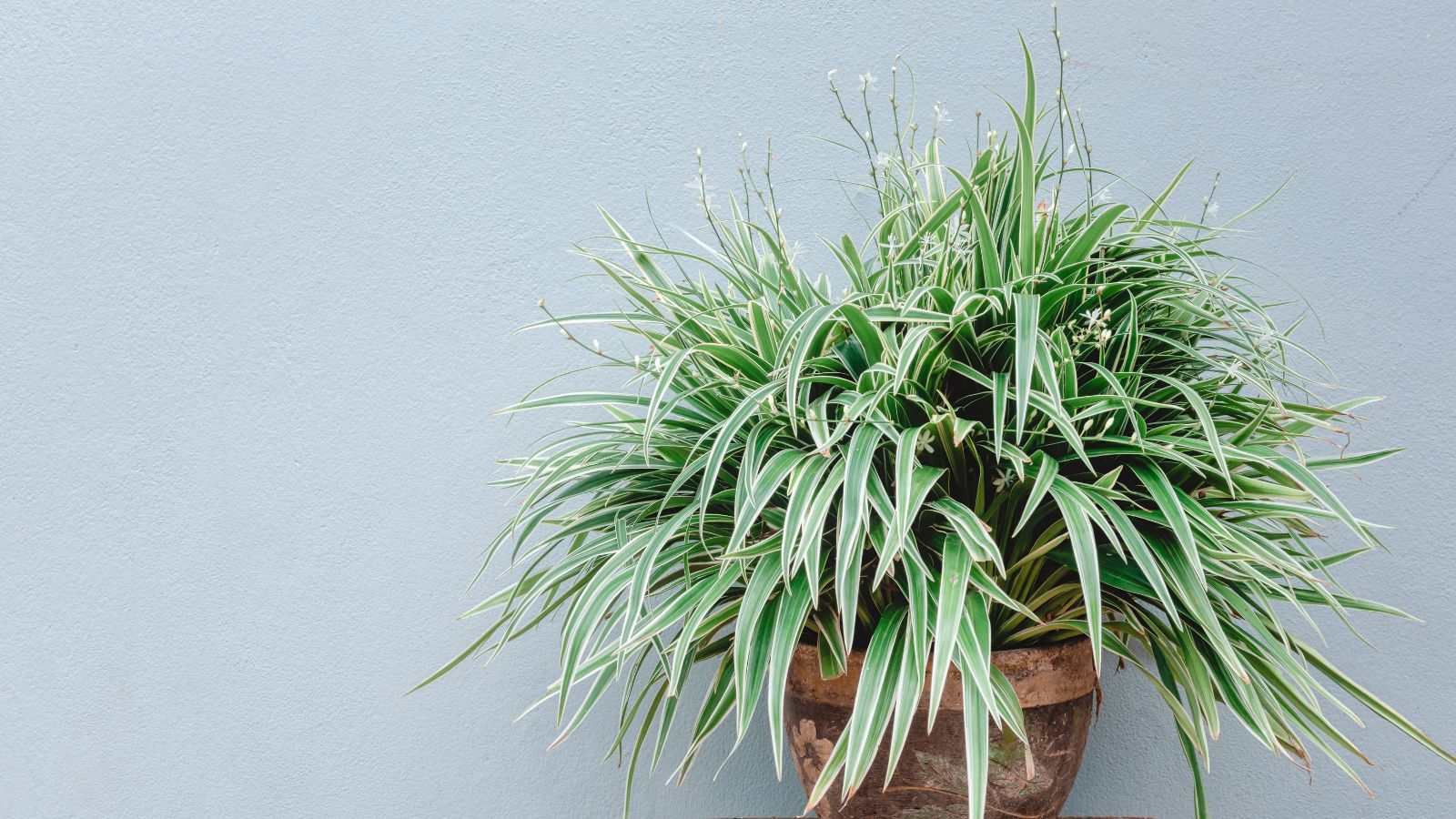

Spider plants are a go-to favorite in many homes, but there are many varieties you might not have noticed. While the classic variegated versions are popular, there are plenty of other unique breeds with different patterns, shapes, and sizes that can add a little extra flair to your plant collection.
Each variety offers something different in terms of spider plant care, growth habits, and appearance – our experts have outlined the distinguishable features of each to help you find the one that best complements your space. Whether you’re searching for a low-light-friendly variety or a compact option for smaller spaces, there will be one to suit your needs.
For those looking to get savvy about spider plants, this guide breaks down everything you need to know about the different breeds, care tips, and how to make the most of these low-maintenance, air-purifying houseplants.
Why are there so many varieties of spider plants?
The wide variety of spider plants we see today is a result of both natural variation and selective breeding. Originally popular in the 60s and 70s, these plants have evolved over the years to offer different shapes, sizes, and colors.
Spider plants come in three main varieties: the most common being variegated types, which feature striped or mottled leaves in shades of green, white, or yellow. The second type has solid green foliage, offering a more uniform look. The least common types of spider plants are curly-leaved.
'Spider plants range from about one foot to two feet tall and can spread to four feet wide,' says horticultural expert Scott Seargeant. 'Most varieties have long strapped-shaped pointed leaves growing from a central area or crown,' says Scott, however, breeders have introduced variations in leaf color, texture, and growth habits. 'There are many color combinations of green shades or leaves with green and white or yellow,' Scott adds.
The growth habit of spider plants also contributes to the variety, with some cultivars having more compact growth, while others spread more widely. 'Spider plants have a clumping-like growth habit with arching shoots,' Scott notes. These arching shoots produce short-lived flowers that give way to small plantlets or “spiderettes," which can form new plants.
Here's a breakdown of the different spider plant varieties:

Scott is an International Consulting Arborist specialising in diagnosing tree conditions, providing treatment, recommendations, selecting appropriate trees for planting, and offering guidance on post-planting tree care. His services encompass tree selection, specialized fertilization, pruning, irrigation system improvement, root zone management, and pest and disease control.
1. Vittatum – Variegated variety
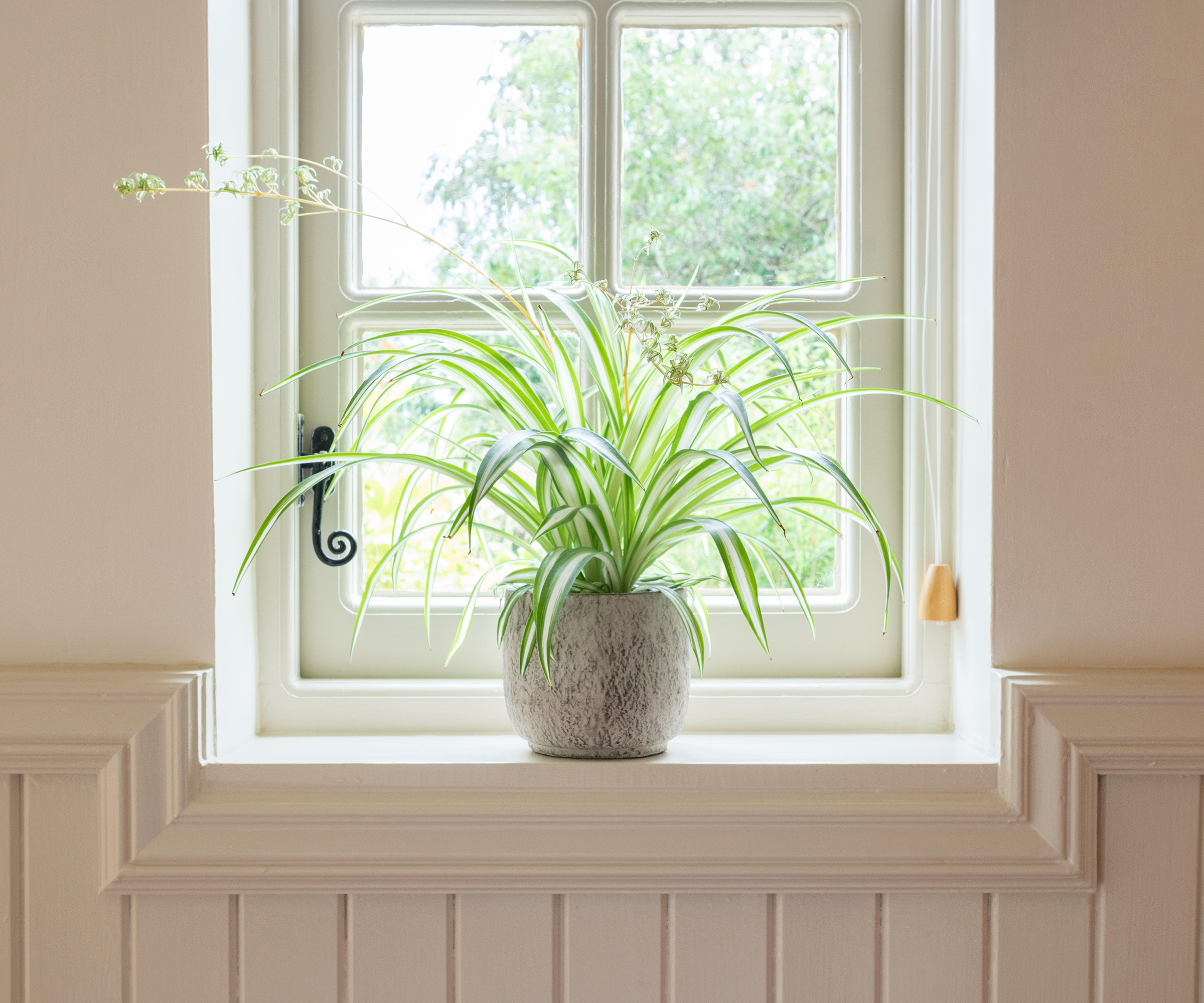
'There are several popular varieties of spider plants, each with unique characteristics. One of the most common varieties, the classic Chlorophytum comosum ‘Vittatum’, is known for its long, arching green leaves with a central white stripe,' explains Christine Tobar, owner, and founder of Botanicoeur.
They thrive in bright, indirect light but can tolerate some shade. Houseplant expert, Lisa Eldred Steinkopf explains: 'Variegated plants need more light as they don’t have as much chlorophyll present to produce their food.' They also prefer moderate watering and occasional misting.
As a trailing variety, these are one of the best plants for hanging baskets. Jeannie Psomas, plant expert and owner of The Plant Lady elaborates: 'Spider plants look great in hanging baskets because they produce iconic baby plants that dangle from the mother plant, sometimes creating giant hanging pom poms that appear to be suspended in mid-air.' If you're going for a boho aesthetic, consider using these Bamworld hanging planters with macrame plant hangers from Walmart.

Christine is the owner and founder of Botanicoeur, a plant interior design company based in Baltimore County, Maryland. She started Botanicoeur in 2022 due to her love of plants and interiors. Christine is a huge proponent of mental health awareness as plants are an easy, natural way to boost your mood and productivity in your home.

Lisa is a houseplant expert who runs her blog The Houseplant Guru with over a decade of professional experience at Steinkopf Nursery and Garden Center in Michigan. As a child, Lisa helped her grandma tend to African violets and other houseplants. Since then, Lisa has forged a career providing houseplant advice, holding lectures and writing for publications across the US.

Jeannie Psomas owns The Plant Lady: San Francisco, an indoor plant shop located in San Francisco, California which caters to collectors and hobbyists alike. With a strong emphasis on plant science and education, Jeannie's philosophy is that anyone can grow gorgeous plants indoors.
2. Variegatum – Variegated variety
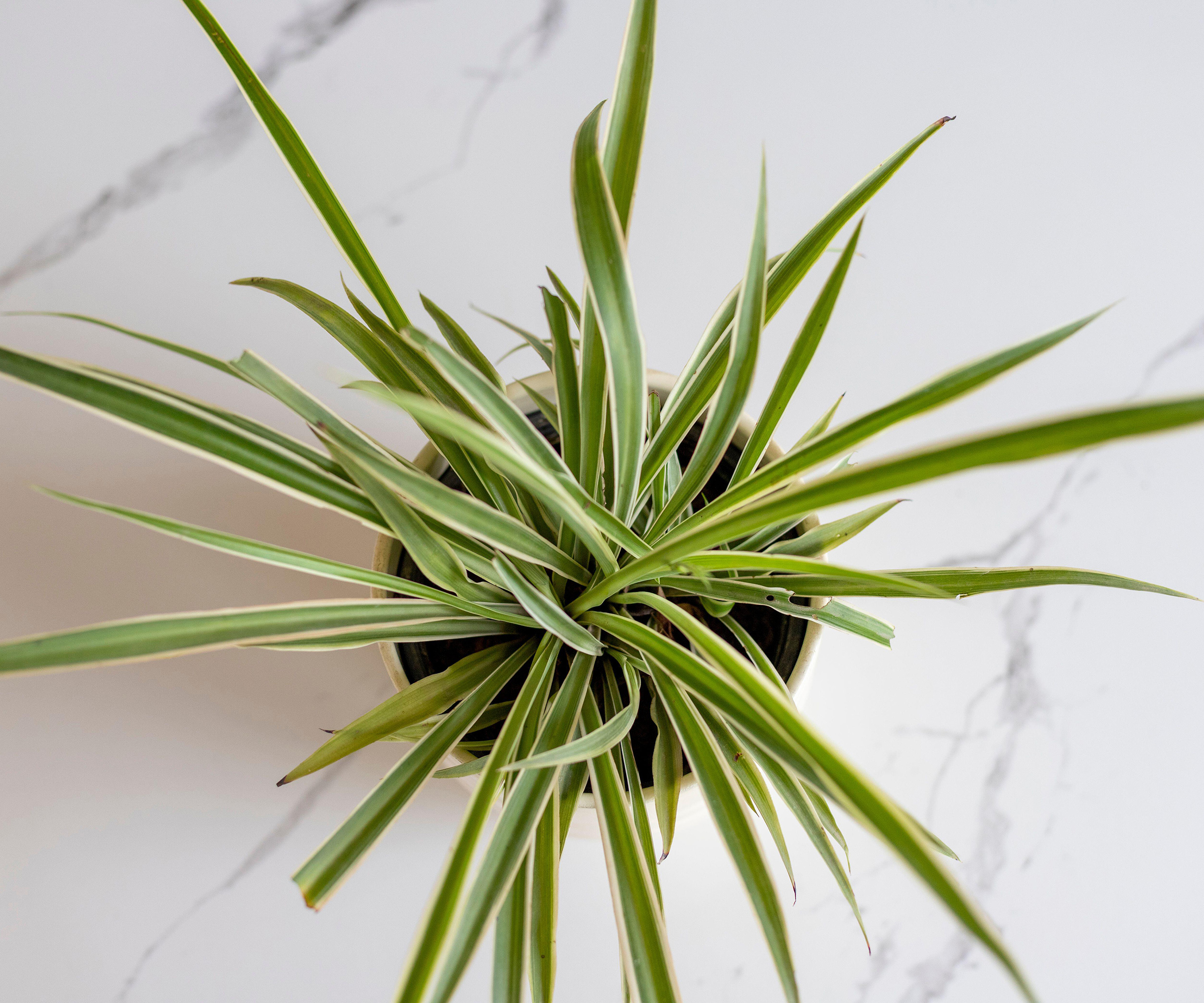
The Variegatum spider plant is essentially the reverse of Vittatum, featuring creamy white edges and green centers, giving it a sharp, defined appearance.
To maintain those crisp, vibrant edges, Variegatum needs consistent light. While they thrive in slightly humid conditions, they retain moisture well, so be cautious not to overwater them.
Lisa Eldred Steinkopf advises, 'I’ve found that letting them dry out a bit is better than keeping them too moist. They have large fleshy roots that store water. You can also tell when a spider plant is overly dry as the leaves become pale and almost translucent.' To prevent this, make sure to water your Variegatum thoroughly each time, ensuring moisture drains from the bottom, but allow the soil to dry slightly between waterings.
Like Vittatum, their cascading growth makes them perfect for macramé hangers or wall-mounted planters, such as these Gartman metal wall planters from Wayfair.
3. Reverse – Variegated variety
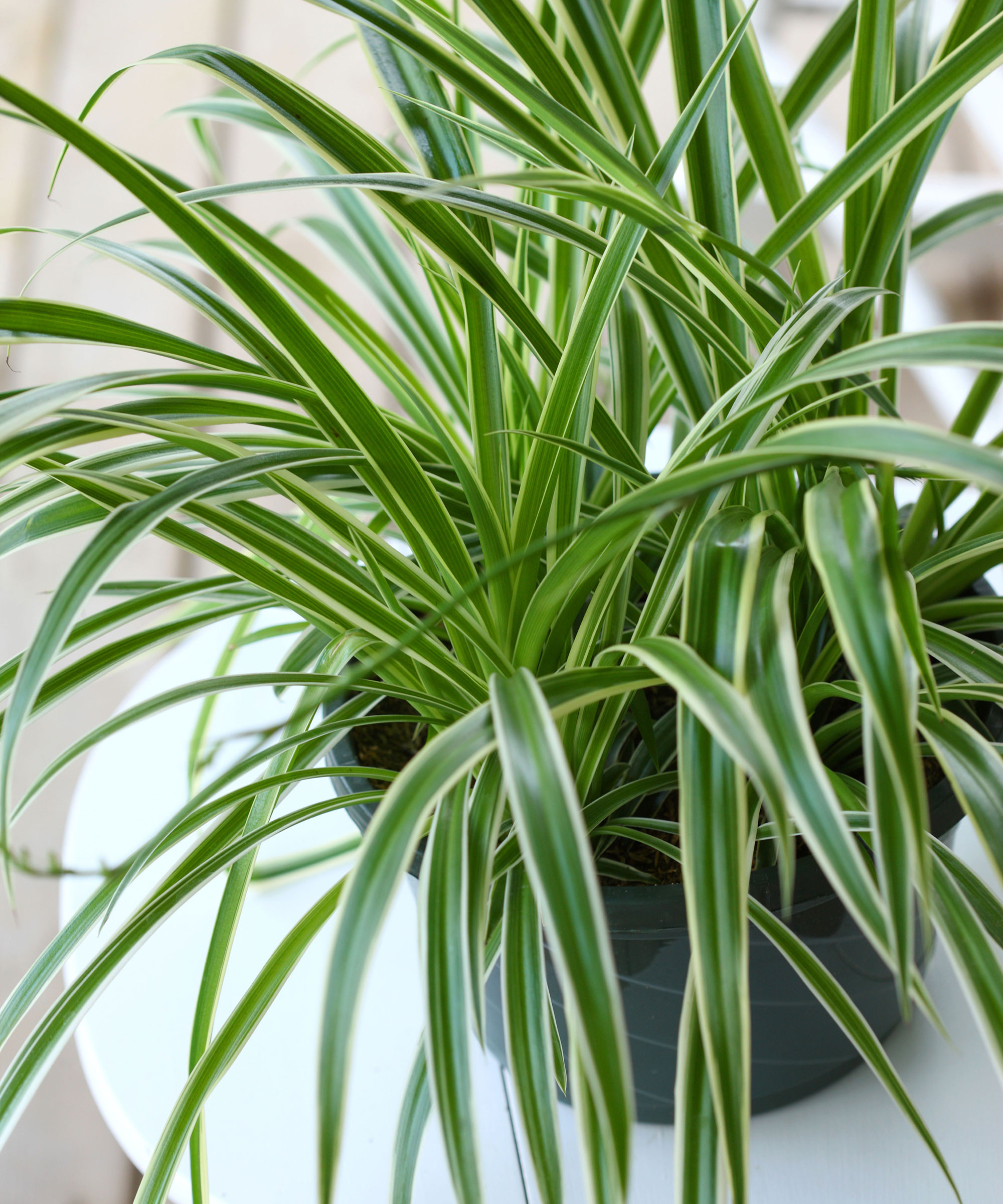
Variegated and reverse have similar leaf shapes and care needs – although they can also be be slightly more drought-tolerant than Variegatum – but their main difference lies in the leaf color patterns.
Reverse spider plant have a more pronounced contrast between the green center and creamy margins, making them a great option for both traditional and modern spaces.
4. Bichetti – Variegated variety
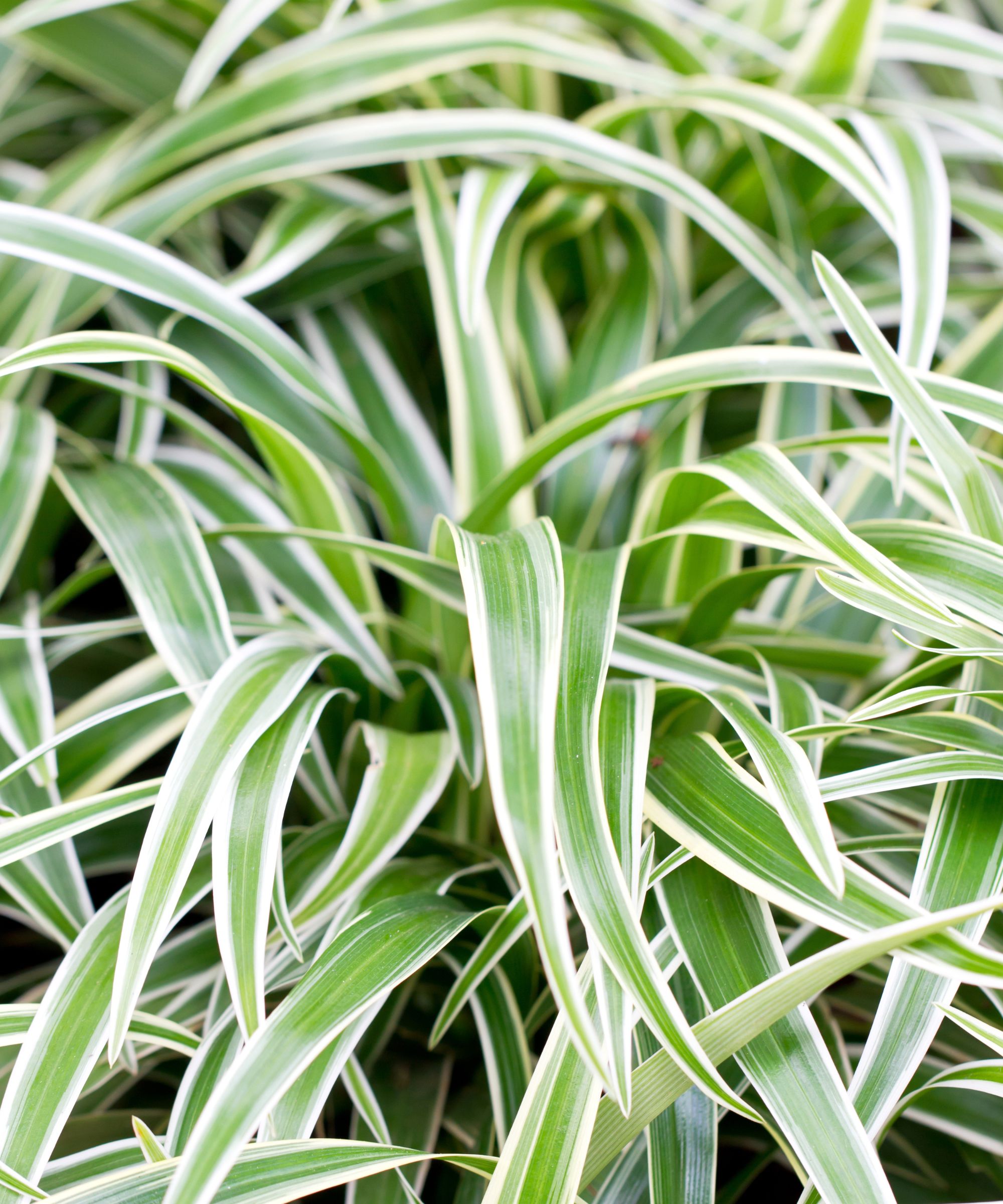
Bichetti leaves are narrower than other Variegated varieties, giving them a more grass-like appearance. They have crisp white edges and produce white flowers. Since they are compact and upright, these are one of the best small indoor plants, making them perfect for desks, nightstands, or small shelves.
Bichetti does well in both bright and slightly lower light. They should only be watered when the top inch of soil is dry.
5. Ocean – Variegated variety
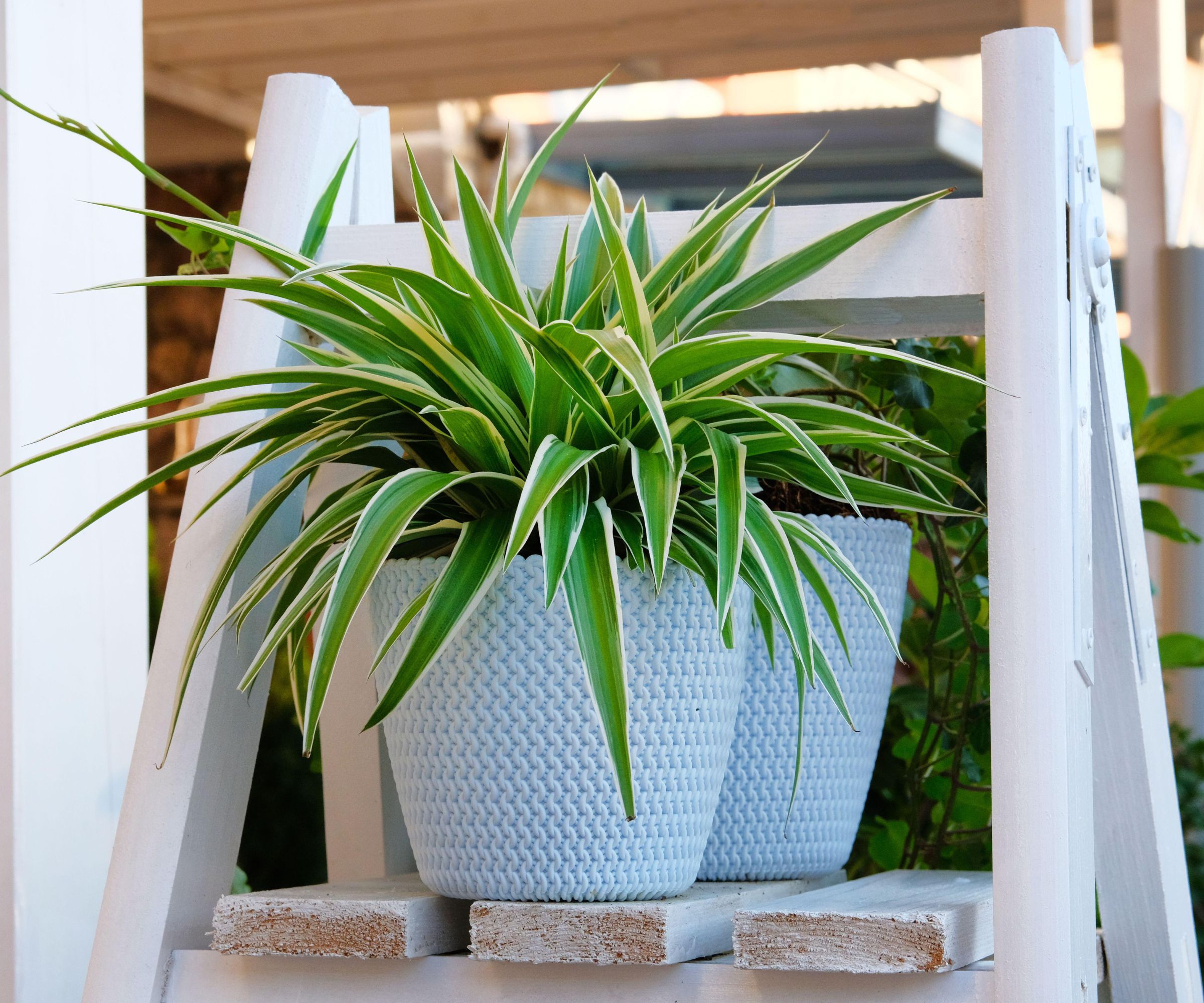
The Ocean spider plant is a newer variegated variety with a distinctive look. Its green leaves are edged in white but are broader and shorter than other types, giving it a more compact, spiky appearance. Unlike the trailing growth of traditional spider plants, Ocean spider plants stay relatively small, reaching about eight inches in height, making it a great choice for smaller spaces or tabletop displays.
These variegated types need plenty of light to maintain their markings. They prefer bright indirect light, making the ideal spot for them near a window but not in direct sunlight.
Ocean spider plants thrive in well-draining soil and high humidity, making it a great option for bathrooms or kitchens. The best containers are for these humidity-loving plants are ceramic and glazed pots. They retain moisture more effectively, making them a perfect choice not just for Ocean but also for Variegatum varieties.
6. Shamrock – Solid green variety
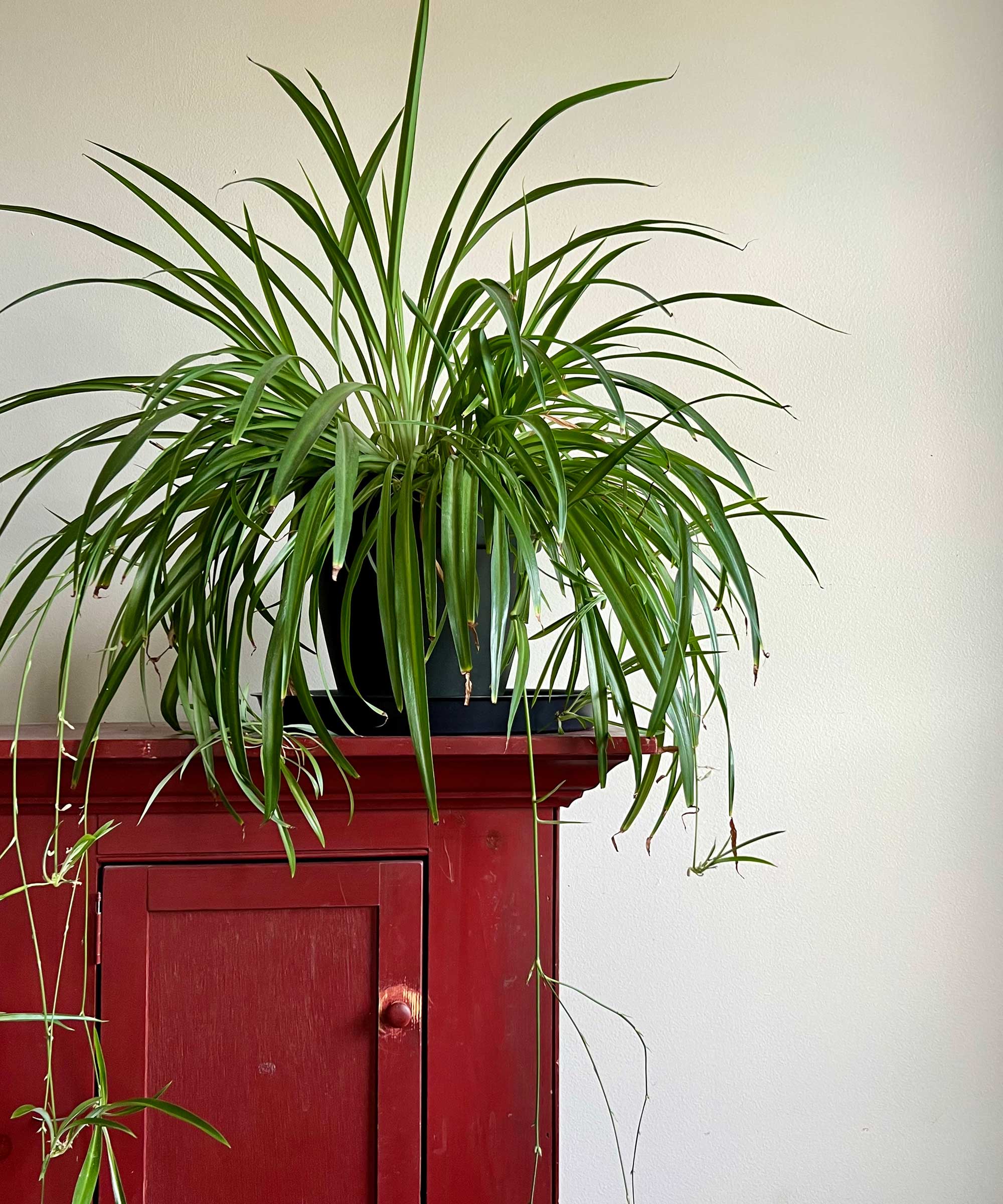
A solid green variety, Shamrock lacks white variegation, giving it a lush, grass-like appearance.
In terms of the best location for this spider plant, Lisa Eldred Steinkopf explains, 'The all-green variety can live in less light than the variegated ones.' Not only is it more adaptable to lower light conditions, but it also requires less maintenance, making it a resilient choice. Water moderately and enjoy its effortless care.
7. Hawaiian
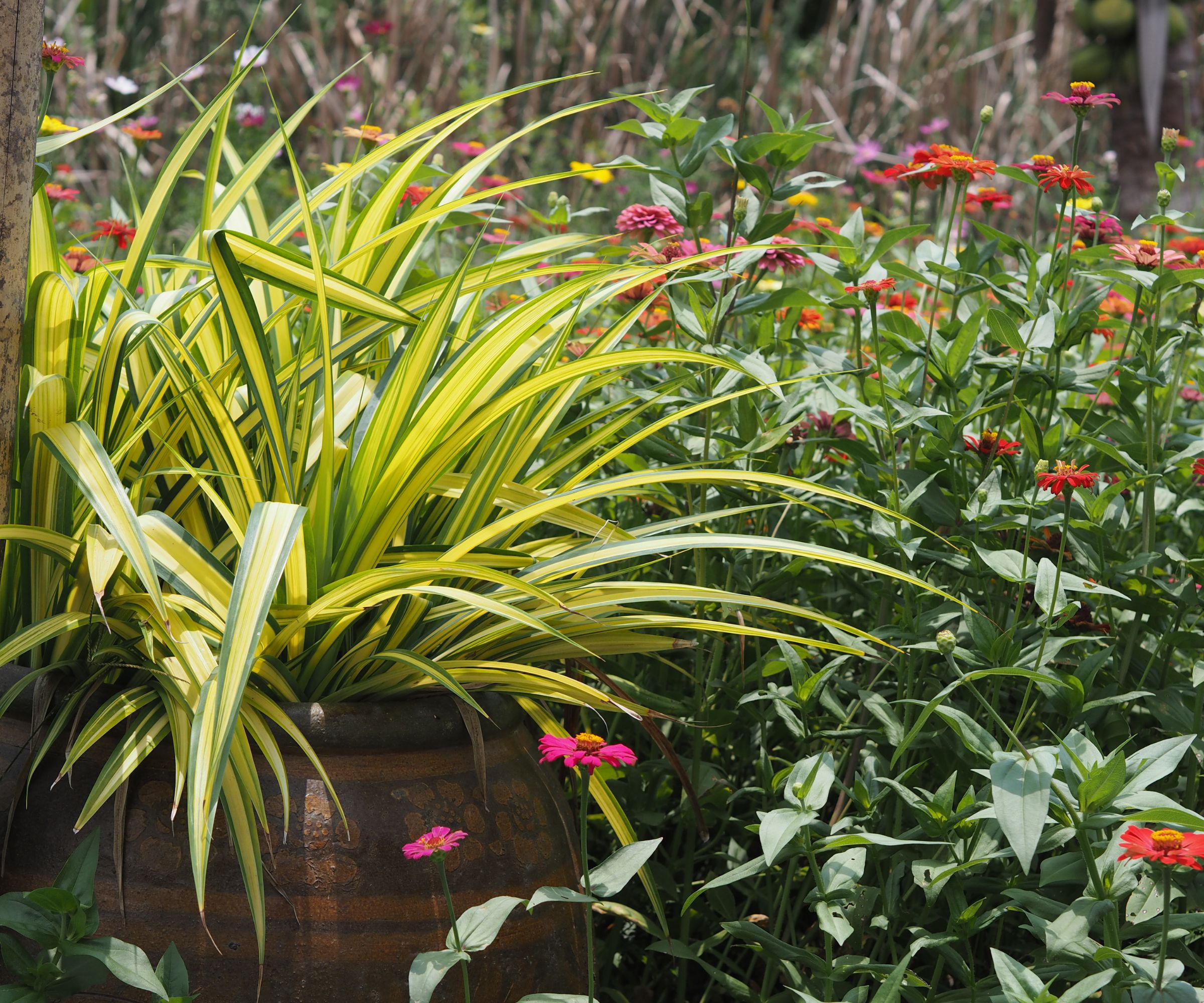
The Hawaiian snake plant variety, also known as Golden Glow, stands out for its striking yellow center, a variation that has occurred through natural breeding. This vibrant feature adds a warm contrast to the darker green outer edges of the leaves.
This variety can tolerate lower light conditions but thrives in medium, indirect light, making it perfect for shaded spots.
In terms of when to water a spider plant, be sure to the topsoil dry before watering. This will typically be once a week, however, always check the soil first by inserting your finger about an inch deep. If it feels dry, it’s time to water.
8. Bonnie – Curly-leaved variety
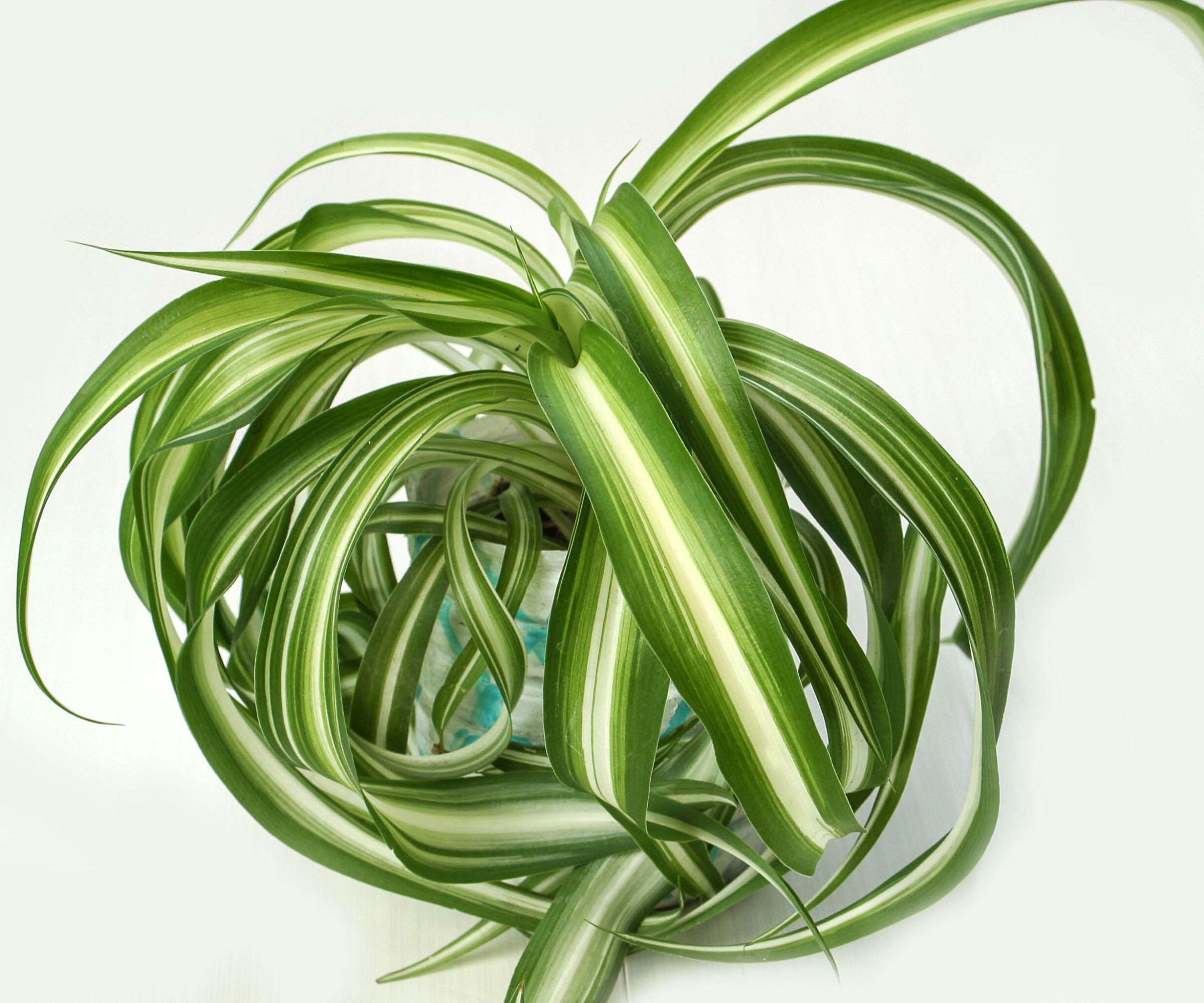
'For a more modern twist on the traditional spider plant, the ‘Bonnie’ spider plant has curly, spiraled leaves that add texture and visual interest,' says Christine Tobar. 'These variations offer versatility, making them ideal for both contemporary and traditional interiors.'
This compact variety retains more moisture, so they require careful watering – allow the soil to dry slightly between waterings. To prevent overwatering, consider using terracotta or clay pots, such as this Anne Terracotta Planter from Walmart, as porous nature helps absorb excess moisture while allowing it to evaporate gradually.
They benefit from higher humidity (between 50-60%) to maintain the curly shape, making them ideal for rooms with high humidity such as bathrooms or kitchens, or near a humidifier. If you're in the market for a new model, this Pelonis humidifier is a best seller at Walmart.
FAQs
How do you propagate spider plants?
Propagating a spider plant is simple way to grow new plants. Spider plants naturally produce long stolons with tiny baby plants at the ends which can be used to create new spider plants. There are two methods you can use to do this.
According to Scott Seargeant, you can cut the small plantlets from the mother plant’s shoot and place them in water until they develop roots. Once rooted, transfer them to a pot with fresh potting soil, water them, and you’re all set.
Alternatively, Lisa Eldred Steinkopf says, 'If you prefer, you can pin the babies to a container of soil near the mother plant without cutting them away. They will root quickly as they still get food and water from the mother plant.'
Is a Fire Flush a type of spider plant?
Yes, while Fire Flush doesn’t resemble traditional spider plants, it still belongs to the same Chlorophytum family.
Lisa Eldred Steinkopf shares, 'My favorite spider plant is the orange spider plant Chlorophytum amaniense called ‘Fire Flush’. It has bright orange stems fading into medium-green leaves and is a beautiful plant. It does not have dangling baby spiders but does flower and drop seeds, producing baby plants.'
No matter which variety of spider plant you choose, there’s a perfect option for every space and style. Aside from their varied appearance, the growth habits of these different varieties allow for a range of beautiful and practical placements – just like where to place a snake plant – whether in hanging baskets where their cascading leaves can trail dramatically, or layered on shelves to add pattern and texture to your home.
Sign up to the Homes & Gardens newsletter
Design expertise in your inbox – from inspiring decorating ideas and beautiful celebrity homes to practical gardening advice and shopping round-ups.

Lola Houlton is a news writer for Homes & Gardens. She has been writing content for Future PLC for the past six years, in particular Homes & Gardens, Real Homes and GardeningEtc. She writes on a broad range of subjects, including practical household advice, recipe articles, and product reviews, working closely with experts in their fields to cover everything from heating to home organization through to house plants. Lola is a graduate, who completed her degree in Psychology at the University of Sussex. She has also spent some time working at the BBC.
You must confirm your public display name before commenting
Please logout and then login again, you will then be prompted to enter your display name.
-
 Ina Garten's storage pantry is an insightful window into all of the best cookware used by the chef – and it's easy to recreate on your kitchen shelves from $48
Ina Garten's storage pantry is an insightful window into all of the best cookware used by the chef – and it's easy to recreate on your kitchen shelves from $48The beautiful dishware in The Barefoot Contessa's Hamptons pantry showcases the tools she uses most often to cook – this is exactly how you replicate it
By Sophie Edwards Published
-
 Extend the lifespan of your appliance with 5 simple but crucial washing machine maintenance tips
Extend the lifespan of your appliance with 5 simple but crucial washing machine maintenance tipsFrom cleaning the filters to keeping the door open, experts reveal the washer tips they swear by
By Andy van Terheyden Published